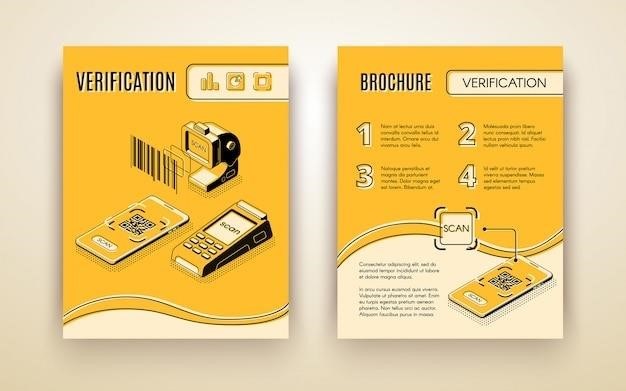SIM Swapping⁚ A Comprehensive Guide
SIM swapping, also known as SIM hijacking, is a type of fraud where a criminal takes control of your mobile phone number by convincing your mobile carrier to transfer your service to a SIM card they control. This allows the criminal to intercept text messages and calls intended for you, potentially gaining access to your online accounts and financial information.
What is SIM Swapping?
SIM swapping is a type of fraud where a criminal takes control of your mobile phone number by convincing your mobile carrier to transfer your service to a SIM card they control. This allows the criminal to intercept text messages and calls intended for you, potentially gaining access to your online accounts and financial information. The process typically involves the criminal using social engineering techniques to impersonate you and provide convincing evidence to the carrier that they are the legitimate owner of the phone number.
This type of fraud is becoming increasingly common as criminals exploit the vulnerabilities in two-factor authentication (2FA) systems. 2FA often relies on receiving a one-time code via SMS, which can be easily intercepted by the criminal who has successfully swapped your SIM card. Once the criminal has control of your number, they can gain access to your online accounts, including banking apps, social media platforms, and email accounts, by resetting passwords and using the intercepted codes.
The implications of SIM swapping can be severe, potentially leading to financial loss, identity theft, and reputational damage. This is why it is crucial to understand the mechanics of SIM swapping and implement measures to protect yourself from this growing threat.
How SIM Swapping Works
SIM swapping is a multi-step process that relies on social engineering and exploiting vulnerabilities in mobile carrier systems. Here’s a breakdown of how it typically works⁚
- Information Gathering⁚ The criminal gathers personal information about their target, including their full name, date of birth, address, phone number, and potentially even account details. This information can be obtained through data breaches, phishing scams, or even simply by accessing public records.
- Social Engineering⁚ The criminal then attempts to contact the victim’s mobile carrier, impersonating the victim. They may use the gathered information to convince the carrier that they are the legitimate owner of the phone number and need to have the SIM card swapped. They may claim they lost their phone, damaged their SIM card, or are simply upgrading their device.
- Verification⁚ The carrier may ask for additional information or require the victim to answer security questions to verify their identity. The criminal may have already obtained the answers to these questions through their information gathering efforts, or they may use more sophisticated tactics to bypass these security measures.
- SIM Swap Execution⁚ If the criminal is successful in convincing the carrier, they will be issued a new SIM card with the victim’s phone number. The victim’s old SIM card will be deactivated, and all calls and text messages will be routed to the criminal’s new SIM card.
- Exploitation⁚ The criminal can now intercept all communications intended for the victim, including two-factor authentication codes, and use this access to gain control of the victim’s online accounts.
The success of SIM swapping depends on the criminal’s ability to convince the carrier and overcome any security measures in place. However, the increasing sophistication of these attacks poses a serious threat to mobile phone users.
The Dangers of SIM Swapping
SIM swapping poses a significant threat to individuals and businesses, potentially leading to substantial financial losses, identity theft, and reputational damage. The consequences of falling victim to this type of fraud can be severe and far-reaching⁚
- Financial Loss⁚ Criminals can use intercepted two-factor authentication codes to gain access to online banking accounts, cryptocurrency wallets, and other financial platforms; They can then transfer funds, make unauthorized purchases, or even take out loans in the victim’s name.
- Identity Theft⁚ By gaining control of the victim’s phone number, criminals can access personal information stored on the device, such as emails, contacts, and social media accounts. They can then use this information to impersonate the victim, open new accounts, or commit other forms of identity theft.
- Account Takeover⁚ SIM swapping can allow criminals to take over various online accounts, including social media, email, and cloud storage services. This can lead to the dissemination of malicious content, the theft of valuable data, or the disruption of critical services.
- Reputation Damage⁚ If a criminal uses the victim’s account to engage in fraudulent or illegal activities, it can have serious consequences for their reputation, potentially impacting their employment, personal relationships, and overall well-being.
- Harassment and Stalking⁚ Criminals can use the victim’s phone number to harass, stalk, or intimidate them, potentially causing emotional distress and psychological harm.
- Loss of Privacy⁚ SIM swapping can compromise the victim’s privacy by giving criminals access to their personal communications and online activities.
The dangers of SIM swapping extend beyond individual victims, as it can also disrupt businesses and critical infrastructure. For example, criminals could target employees with access to sensitive information or attempt to disrupt communication systems during emergencies.
Protecting Yourself from SIM Swapping
While SIM swapping can be a sophisticated attack, there are several steps you can take to protect yourself and minimize your risk of becoming a victim⁚
- Enable Two-Factor Authentication (2FA)⁚ 2FA adds an extra layer of security by requiring a code sent to your phone in addition to your password when logging into accounts. This helps prevent unauthorized access even if your password is compromised. However, be cautious about relying solely on SMS-based 2FA as it can be vulnerable to SIM swapping. Consider using alternative methods like authenticator apps or hardware security keys.
- Be Wary of Social Engineering⁚ Criminals often use social engineering tactics to trick victims into providing personal information. Be cautious of unsolicited calls, emails, or messages requesting personal data, especially from unknown sources. Do not disclose sensitive information like your phone number, password, or security codes to anyone you don’t trust.
- Use Strong Passwords⁚ Create unique, strong passwords for all your online accounts and avoid using the same password for multiple accounts. Consider using a password manager to help you generate and store strong passwords securely.
- Monitor Your Accounts⁚ Regularly check your bank statements, credit card accounts, and other financial accounts for suspicious activity. If you notice any unusual transactions, contact your bank or financial institution immediately.
- Be Vigilant with Your Mobile Device⁚ Keep your phone’s operating system and apps updated to the latest versions, as these updates often include security patches that can protect against vulnerabilities. Be careful about downloading apps from unknown sources or clicking on suspicious links.
- Report Suspicious Activity⁚ If you suspect that you might be a victim of SIM swapping or any other type of fraud, contact your mobile carrier immediately and report the incident to the authorities.
- Consider a Security Key⁚ Using a physical security key for 2FA is a more secure alternative to SMS-based 2FA as it cannot be intercepted by criminals. This can significantly reduce your risk of falling victim to SIM swapping.
By following these tips, you can significantly reduce your risk of becoming a victim of SIM swapping and protect your personal and financial information.
Steps to Take if You’ve Been a Victim of SIM Swapping
If you suspect you’ve been a victim of SIM swapping, it’s crucial to act swiftly and decisively to mitigate the damage. Here’s a step-by-step guide to help you navigate this situation⁚
- Contact Your Mobile Carrier Immediately⁚ This is the first and most important step. Inform your carrier about the suspected SIM swap and request them to immediately suspend your phone number. Explain the situation clearly and provide any relevant details you have.
- Change Your Passwords⁚ As soon as you suspect a SIM swap, change the passwords for all your online accounts, especially those with sensitive information like banking, email, and social media. Use strong, unique passwords for each account.
- Enable Two-Factor Authentication (2FA)⁚ If you haven’t already, enable 2FA on all your important accounts. However, avoid relying solely on SMS-based 2FA, as it can be vulnerable to SIM swapping. Opt for authenticator apps or hardware security keys for an extra layer of protection.
- Monitor Your Accounts⁚ Regularly check your bank statements, credit card accounts, and other financial accounts for suspicious activity. If you notice any unusual transactions, contact your bank or financial institution immediately.
- Report the Incident to the Authorities⁚ File a report with your local law enforcement agency about the SIM swap. Provide them with as much information as possible, including details about any financial losses or other damages you have suffered.
- Contact Credit Reporting Agencies⁚ If you believe your personal information may have been compromised, contact credit reporting agencies like Equifax, Experian, and TransUnion to place a fraud alert on your credit report. This will help prevent criminals from opening new accounts in your name.
- Consider a Security Key⁚ If you’re concerned about SIM swapping, invest in a physical security key for your 2FA. This is a more secure alternative to SMS-based 2FA, as it cannot be intercepted by criminals.
It’s essential to act quickly and decisively when dealing with SIM swapping. By following these steps, you can minimize the damage and help protect yourself from further harm.
Legal Consequences of SIM Swapping
SIM swapping is a serious crime with potentially severe legal consequences. The severity of the charges and penalties can vary depending on the jurisdiction and the extent of the damage caused. Here’s an overview of the legal ramifications associated with SIM swapping⁚

- Identity Theft⁚ SIM swapping often involves stealing a victim’s identity, which is a federal crime in the United States. The penalties for identity theft can be substantial, including fines and lengthy prison sentences;
- Fraud⁚ SIM swapping is frequently used to commit financial fraud, including unauthorized access to bank accounts, credit card accounts, and cryptocurrency wallets. These actions can lead to charges of wire fraud, bank fraud, or other related offenses.
- Computer Fraud⁚ The use of technology to gain unauthorized access to online accounts and systems can result in computer fraud charges, which can carry hefty penalties.
- Conspiracy⁚ If multiple individuals are involved in a SIM swapping scheme, they can face charges of conspiracy, which can increase the severity of the penalties.
- Cybercrime⁚ SIM swapping is often categorized as a cybercrime, and jurisdictions may have specific laws and regulations addressing cybercrime, which can include additional penalties.
The legal consequences of SIM swapping can be significant, with potential charges ranging from misdemeanors to felonies. The penalties can include fines, imprisonment, and a criminal record, which can have long-term implications for an individual’s life.

SIM Swapping and Two-Factor Authentication
Two-factor authentication (2FA) is a security measure designed to enhance account protection by requiring users to provide two separate forms of identification before granting access. This is often implemented through a combination of something you know (like a password) and something you have (like a physical token or a code sent to your phone). However, SIM swapping poses a significant threat to 2FA, undermining its effectiveness and leaving users vulnerable to account takeovers.
Here’s how SIM swapping can bypass 2FA⁚
- Intercepting Verification Codes⁚ When a user attempts to access an account, a 2FA code is typically sent to their mobile phone via text message or an authentication app. With control over the victim’s phone number, a SIM swapper can intercept these codes, allowing them to bypass the 2FA step and gain access to the account.
- Changing Password⁚ Once the SIM swapper has access to the account, they can often change the password, effectively locking the legitimate owner out. This can make it extremely difficult for the victim to regain control of their account, as they may not receive 2FA codes or password reset emails.
- Enabling Account Takeover⁚ By gaining access to a compromised account, the SIM swapper can then make unauthorized transactions, withdraw funds, change account settings, or steal sensitive information. This can have devastating financial and personal consequences for the victim.
The effectiveness of 2FA is severely compromised when SIM swapping is employed, highlighting the critical need for additional security measures to protect users from this type of attack.
SIM Swapping in the Digital Age
The rise of the digital age has brought about a surge in online services and transactions, making our reliance on mobile devices and secure communication paramount. This interconnectedness, however, has also created fertile ground for cybercriminals to exploit vulnerabilities, and SIM swapping has become a prevalent threat in this digital landscape.
Here’s how SIM swapping has adapted and thrived in the digital age⁚
- Increased Reliance on Mobile Devices⁚ The digital age has witnessed a dramatic shift towards mobile devices for everything from banking and shopping to social media and communication. This dependence on smartphones makes them a highly attractive target for SIM swappers, who can gain access to a wealth of sensitive information and accounts through a compromised phone number.
- Prevalence of Two-Factor Authentication⁚ While 2FA is intended to enhance security, it has ironically created an opening for SIM swapping attacks. As mentioned previously, criminals can exploit 2FA systems by intercepting verification codes sent to mobile devices, making it a crucial target in their schemes.
- Sophisticated Social Engineering Techniques⁚ SIM swappers have become increasingly sophisticated in their social engineering techniques, using clever tactics to manipulate mobile carriers into transferring a victim’s phone number to a new SIM card. They often exploit vulnerabilities in customer service protocols, impersonate victims, or use stolen personal information to convince carriers to comply with their requests.
The digital age has created a complex environment where our personal and financial information is increasingly interconnected with our mobile devices. This interconnectedness, coupled with the growing reliance on online services, has made SIM swapping a significant and evolving threat in the digital landscape.
The Future of SIM Swapping
The future of SIM swapping is likely to be a complex and evolving landscape, shaped by a confluence of factors, including technological advancements, regulatory changes, and the ongoing battle between cybercriminals and security professionals. It’s essential to understand the potential trends and challenges that lie ahead to effectively mitigate the risks associated with this evolving threat.
Here are some key considerations regarding the future of SIM swapping⁚
- Emerging Technologies⁚ The introduction of new technologies like eSIMs and 5G could potentially impact SIM swapping in both positive and negative ways. eSIMs, with their digital nature, might offer more robust security features, making them less susceptible to traditional SIM swapping tactics. However, the potential for new vulnerabilities in eSIM management systems or the increased complexity of security protocols could create new avenues for exploitation by criminals.
- Increased Awareness and Education⁚ As awareness of SIM swapping grows, individuals and organizations are becoming more proactive in taking steps to protect themselves. This includes adopting best practices for online security, being cautious about sharing personal information, and educating employees about SIM swapping risks. Increased awareness can help to deter attacks and empower individuals to take action.
- Regulatory Changes⁚ Governments and regulatory bodies worldwide are increasingly focusing on strengthening security measures to combat SIM swapping and other forms of mobile fraud. This could involve stricter regulations for mobile carriers, increased penalties for perpetrators, and enhanced data protection laws.
The future of SIM swapping is likely to be marked by a continuous arms race between criminals seeking new ways to exploit vulnerabilities and security professionals striving to stay ahead of the curve. Staying informed about emerging trends, adopting robust security practices, and advocating for stronger regulations will be crucial in navigating this evolving landscape.



